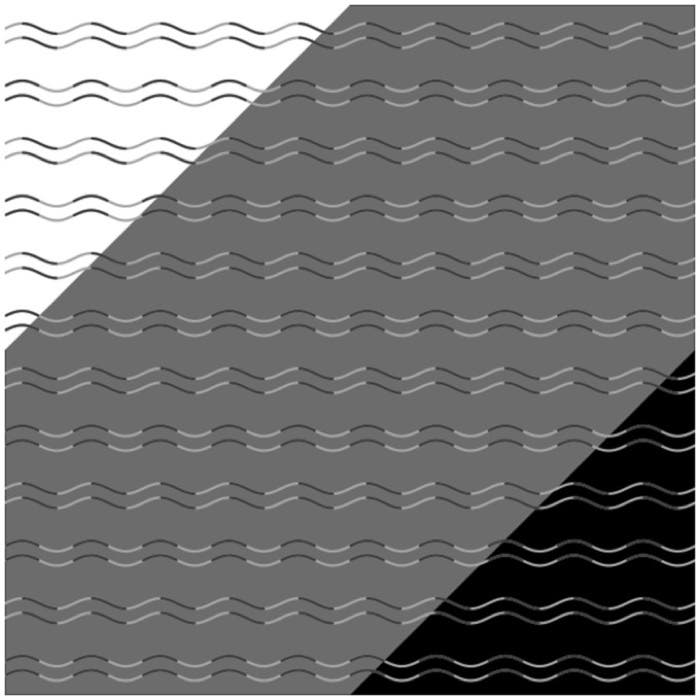
Look at the picture above. What kind of lines do you see in the middle, grayed-out part: wavy, straight, or both? The truth is all the lines represented in the image are curvy, but if you’re like most people, you should see alternating rows of straight-angled and wavy lines.
Japanese psychologists found that this optical illusion underlies a newly identified cognitive bias in humans. It’s called the “curvature blindness illusion”. Though it’s somewhat unclear how it works, scientists think it’s caused by the brain using different mechanisms to identify curved and angular shapes. These mechanisms may interfere or compete with each other, producing this strange effect.
“We propose that the underlying mechanisms for the gentle curve perception and those of obtuse corner perception are competing with each other in an imbalanced way”, explained Kohske Takahashi, an associate professor of experimental psychology at Japan’s Chukyo University, in a statement. “and the percepts of corner might be dominant in the visual system”.
When Takahashi presented the optical illusion to a sample of students, all the participants saw alternating rows of wavy and zig-zagging lines, suggesting this is a significant effect.
[panel style=”panel-default” title=”What is an optical illusion?” footer=””]Optical illusions occur when the eyes send information to our brains that tricks us into perceiving something that does not match reality.
Illusions can use color, light, and patterns to create images that can be deceptive or misleading to our brains.[/panel]
Takahashi and colleagues conducted three different experiments to deconstruct how the illusion works, in each instance changing subtle details like the height of the curves, the color of the background, and whether the lines changed color at the peak of the curve or on either side of it.
If the background is either black or white, all lines appear curved. To reliably produce the illusion, the lines have to change color before and after the peaks of each curve, and they have to appear over a gray background to contrast the light and dark tones of each line. When the two colors meet at the curve’s peak, a subtle vertical line effect is created that exaggerates the sharpness, fooling us that the line is zig-zagged.
When the curve and angle perception mechanisms interfere in such situations, Takahashi says that angle perception takes priority. The brain might have evolved to prefer angles over curves for some reason that escapes us now. But the brain doesn’t appear to cause this phenomenon in real life outside of the illusion, otherwise, somebody else should have found this illusion earlier.
The findings appeared in the journal i-Perception.






